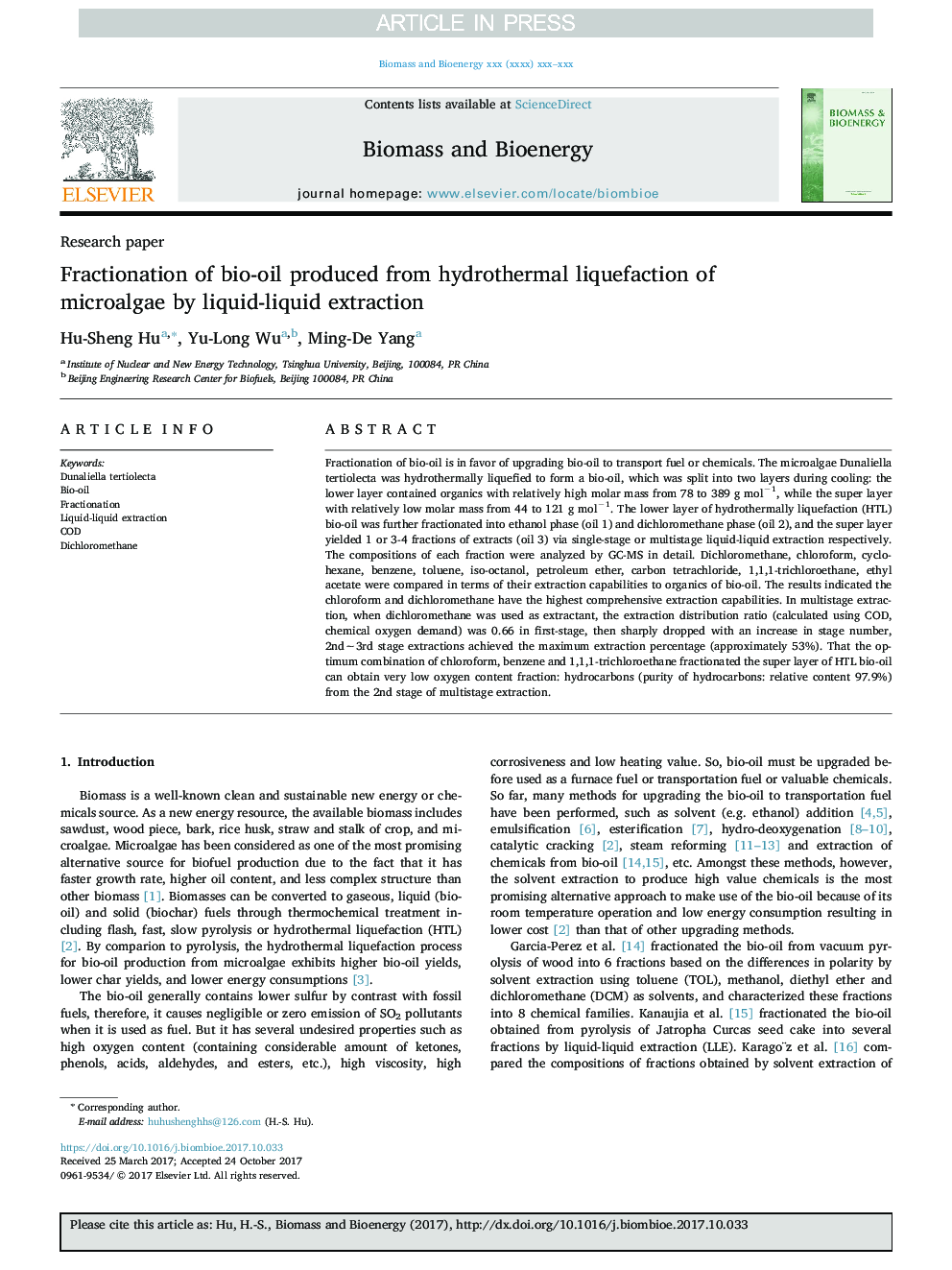| Article ID | Journal | Published Year | Pages | File Type |
|---|---|---|---|---|
| 7063086 | Biomass and Bioenergy | 2018 | 14 Pages |
Abstract
Fractionation of bio-oil is in favor of upgrading bio-oil to transport fuel or chemicals. The microalgae Dunaliella tertiolecta was hydrothermally liquefied to form a bio-oil, which was split into two layers during cooling: the lower layer contained organics with relatively high molar mass from 78 to 389Â g molâ1, while the super layer with relatively low molar mass from 44 to 121Â g molâ1. The lower layer of hydrothermally liquefaction (HTL) bio-oil was further fractionated into ethanol phase (oil 1) and dichloromethane phase (oil 2), and the super layer yielded 1 or 3-4 fractions of extracts (oil 3) via single-stage or multistage liquid-liquid extraction respectively. The compositions of each fraction were analyzed by GC-MS in detail. Dichloromethane, chloroform, cyclohexane, benzene, toluene, iso-octanol, petroleum ether, carbon tetrachloride, 1,1,1-trichloroethane, ethyl acetate were compared in terms of their extraction capabilities to organics of bio-oil. The results indicated the chloroform and dichloromethane have the highest comprehensive extraction capabilities. In multistage extraction, when dichloromethane was used as extractant, the extraction distribution ratio (calculated using COD, chemical oxygen demand) was 0.66 in first-stage, then sharply dropped with an increase in stage number, 2ndâ¼3rd stage extractions achieved the maximum extraction percentage (approximately 53%). That the optimum combination of chloroform, benzene and 1,1,1-trichloroethane fractionated the super layer of HTL bio-oil can obtain very low oxygen content fraction: hydrocarbons (purity of hydrocarbons: relative content 97.9%) from the 2nd stage of multistage extraction.
Related Topics
Physical Sciences and Engineering
Chemical Engineering
Process Chemistry and Technology
Authors
Hu-Sheng Hu, Yu-Long Wu, Ming-De Yang,
